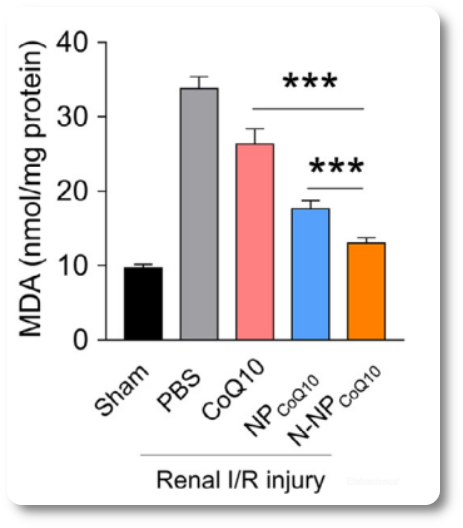 |
| ||||||
| |||||||
| / Каталог / Реагенты для научных исследований / Assay kits - колориметрические наборы для определения активности соединений / Elabscience Assay kits / Окислительный стресс / Oxidative Stress / Малоновый диальдегид (МДА) / Malondialdehyde (MDA) | |||||||||||||||||||||||||||||||||||||||||||||||||||||||||||||||||
Набор для анализа Малонового диальдегида (МДА) / Malondialdehyde (MDA) Colorimetric Assay Kit (TBA Method)Malondialdehyde (MDA) Colorimetric Assay Kit (TBA Method)
Detection principleMDA in the catabolite of lipid peroxide can react with thiobarbituric acid (TBA) and produce red compound, which has a maximum absorption peak at 532 nm.
Performance characteristics
Images
The level of MDA was significantly lower (P<0.001) in NPCoQ10 groups and even lower in N-NPCoQ10 group. Z Liu et al found that the usage of N-NPCoQ10 nano-particle can help for transforming the antioxidants which could ameliorate the renal I-R injury in mice. Malondialdehyde (MDA) of rat serum was determined using MDA colorimetric assay kit (E-BC-K025-M). Dilution of sampleIt is recommended to take 2~3 samples with expected large difference to do pre-experiment before formal experiment and dilute the sample according to the result of the formal experiment and the detection range (2.92-40 μmol/L). The recommended dilution factor for different samples is as follows (for reference only):
Note: The diluent is normal saline (0.9% NaCl) or PBS (0.01 M, pH 7.4). Информация для заказа
| |||||||||||||||||||||||||||||||||||||||||||||||||||||||||||||||||
|
|
© ООО «Лабораторная Диагностика» info@LD.ru тел.: +7 495 369-20-43 |

